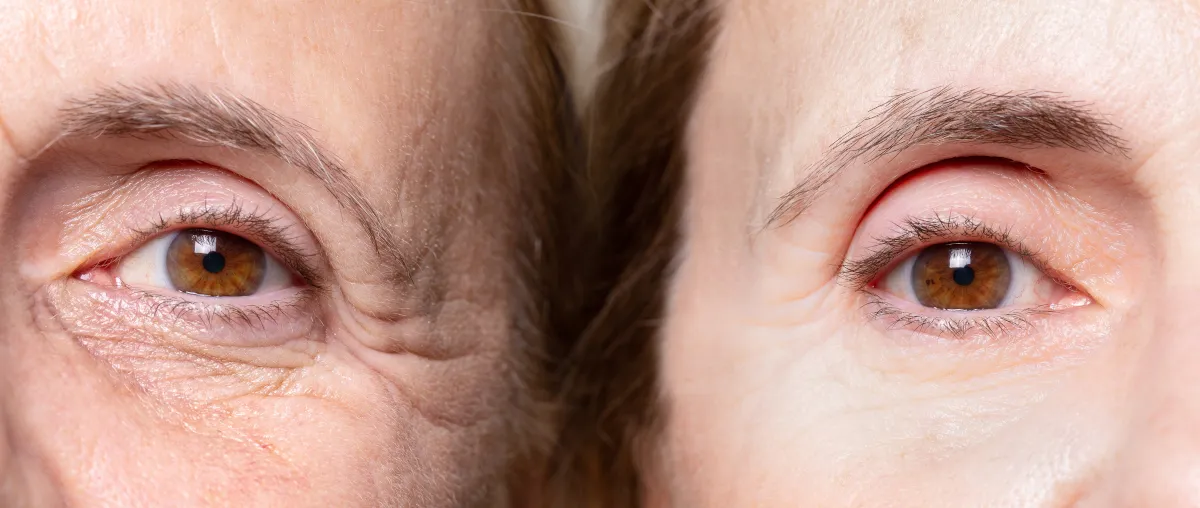It’s hard not to think about wrinkles every time you read the word “Botox”. Since its introduction in 1989, Botox treatments have expanded far beyond Hollywood and high fashion. Increased accessibility and a decrease in the average cost of treatment has seen a sizeable growth in demand, particularly among young adults.1
To put it in perspective, Botox generated a staggering $2.4 billion dollars in 2015 alone. Even more curious, more than half of that $2.4 billion had nothing to do with wrinkles.2
You see, Botox actually boasts several FDA approved therapeutic and medical uses. Today, we’ll highlight a number of those alternative uses.
 sruilk/Shutterstock
sruilk/ShutterstockWhat Is Botox?
Botox, a derivative of a bacteria called C. botulinum, occurs naturally in the world. You can find it in soil, forests, fish, and lakes. Given enough time, C. botulinum bacteria will produce Botulinum toxin, an incredibly dangerous neurotoxin and the sole cause of a deadly condition called botulism.
In small doses and professional settings, botulinum toxin is safe. The makers of Botox use an infinitesimal amount of it in various medical, therapeutic, and cosmetic settings. Botox is a neurotoxin designed to interfere with the way your muscles contract, and, according to the FDA, it has a wide range of useful applications.
FDA Approval
The FDA has a rigorous process by which it puts every newly discovered pharmaceutical through. The process involves five steps. It begins with discovery and development and concludes with post-market safety monitoring. The goal is to ensure that every pharmaceutical that reaches the consumer market is safe and useful.3
To date, the FDA has approved the use of Botox to treat nine medical conditions. That’s in addition to the product’s various cosmetic applications. Plus, there may be more uses coming. Botox is associated with nearly 800 additional patents that haven’t yet been cleared by the FDA’s stringent approval process.4
The following list of alternative uses for Botox focuses solely on those that have already been approved by the FDA.
Chronic Migraines
Though the FDA only approved the use of Botox to treat migraine headaches in 2010, research on the matter can be traced all the way back to 1992. At that time, one of Botox’s earliest pioneers noticed that those seeking cosmetic treatment also reported fewer headaches.
The discovery and subsequent scientific research would later lead to its FDA approval. Migraine treatment consists of multiple injections of Botox in specific areas of the forehead and back of the neck.5
Overactive Bladder
Botox is considered one of the most effective treatments available for overactive bladder and urgency incontinence. It’s typically used only after the failure of other, less invasive medications and treatments.
Injection treatment requires local anesthesia, and involves targeting the interior muscles of the bladder with around 100 to 200 units of the neurotoxin in various places. It works incredibly well, with as many as 75 percent of patients experiencing a reduction of symptoms.6
Excessive Underarm Sweating
The use of Botox to treat excessive sweating came about organically. Patients seeking cosmetic treatment noticed a sizable, post-treatment perspiration decrease. Further research confirmed the sweat-fighting characteristics of Botox treatments and it was eventually approved for use in medical settings.
Treatment for excessive underarm sweating, or hyperhidrosis, takes roughly 45 minutes and involves roughly 15 to 20 injections into the area of concern. It’s said that one treatment can reduce the prevalence of underarm sweating as much as 50 percent for a minimum of six months.7
Severe Neck Spasms
The FDA has approved Botox as a treatment for severe neck spasms. The condition is called cervical dystonia. It’s consistent with symptoms of involuntary neck spasms and severe neck pain.
Dosage is determined by the severity of the condition, with the average settling in at around 236 units across multiple injections. The injections target muscles around the neck and are usually administered at three month intervals.8
Crossed Eyes
Strangely enough, the use of Botox to treat strabismus, or crossed eyes, was one of the very alternative Botox treatments to be approved. The condition, which is typified in a patient whose eyes don’t line up in the same direction, affects roughly four percent of Americans at any one time.
Treatment involves a series of injections around the muscles that contract the eye. The effects of the Botox begin to take effect 24 to 48 hours following the procedure.
Average Cost of Botox Treatments
The cost of Botox treatment is largely determined by the number of units that you get and where you chose to get your treatment done. You should expect to pay roughly $10 to $15 per unit of Botox. With an average treatment being around 30 to 40 units, the average cost of treatment comes in at around $500.
Be aware that you can’t expect your medical insurance provider to cover the cost of Botox for cosmetic applications. Depending on your health plan though, an insurance company may cover some or all of the cost of a policyholder’s therapeutic or medical treatment.9
Conclusion
Botox is not just for wrinkles anymore. The immensely popular and profitable neurotoxin is FDA approved to treat a number of medical conditions, from excessive underarm sweating to chronic migraines.
The trendiness and vast practical application of Botox has led to a dramatic increase in popularity, as well as a decrease in the average cost of treatment. And, with more than 800 patents just waiting to be researched, it’s safe to say that Botox is here to stay.